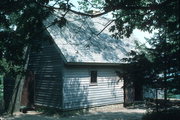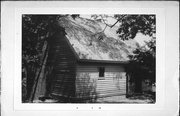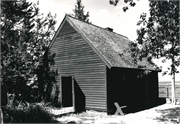| Additional Information: | Two 'site files' (Shot Tower (Daniel Whitney, Platte and Co.) & Tower Hill State Park) exist for this property. They contain additional information such as correspondence, newspaper clippings, or historical information. They are public records and may be viewed in person at the State Historical Society, Division of Historic Preservation.
TOWER WAS BUILT BY THOMAS B. CHAUNCE. Shot tower sunk through 120 feet of rock in 1831-1833 manufactured lead shot from crude pigs of lead mined nearby until ca. 1861. In 1890, Rev. Jenkin Lloyd Jones and others purchased the land for the Tower Hill Pleasure Co., a religious retreat.
Less glamorous than silver or gold, lead nevertheless carried great importance for the young United States. It was used to make paint, pewter, pipes, weights--and, not the least, ammunition, which helps explain why the federal government eagerly stimulated domestic lead production in the early nineteenth century. Ammunition was made in shot towers like this one. Workers first melted the lead in large vats, adding arsenic to make the metal more brittle. Then, using perforated ladles (different-sized perforations created different gauges of shot), the workers dripped the molten metal down the tall tower shaft into a shallow basin of water at the bottom. The drops formed spheres as they fell, cooling and solidifying as they hit the water. The workers removed the shot through a tunnel and took it to another building for sorting, weighing, and packing.
Entrepreneur Daniel Whitney of Green Bay built this shot tower and began production in 1833. It continued in use until 1861, producing about two and one-half tons of shot per day at its peak. From the front-gabled melting house, perched at the edge of a cliff, the shaft plunges some 180 feet to the 3-foot-deep basin of water at the bottom. The shaft is framed in wood for the first 60 feet, then burrows the last 120 feet through solid sandstone. The present wood-framed, clapboard-clad upper shaft and melting house are faithful replicas of the originals. Both the shaft and the 90-foot tunnel leading away from it are 6 feet in diameter. The construction of this facility was an engineering feat, considering that the workers had no drawings or surveyors’ instruments. They dug the shaft and tunnel by hand, using picks and gads. Using only a line of stakes, they managed to align the base of the shaft with the tunnel almost perfectly. |
|---|




